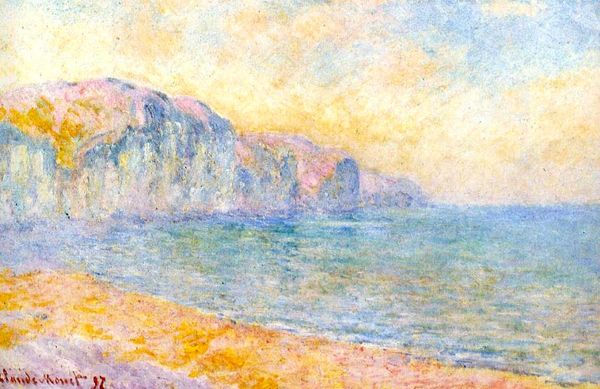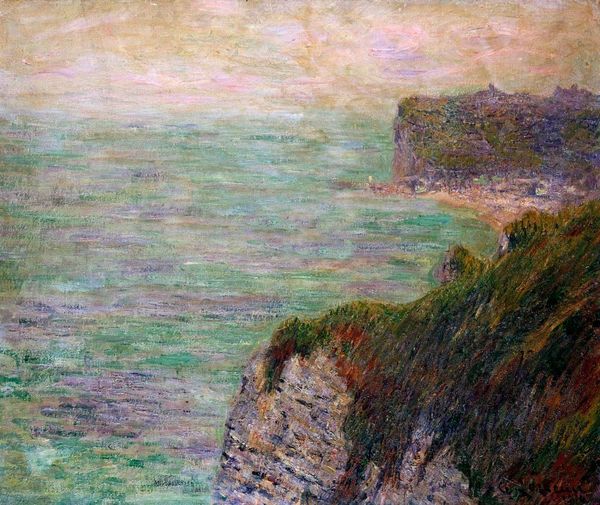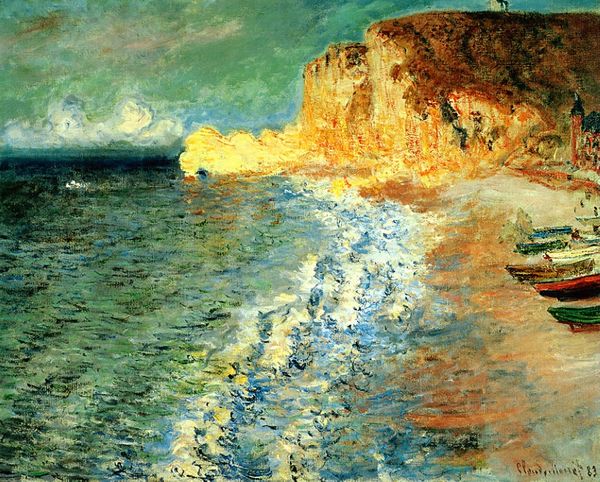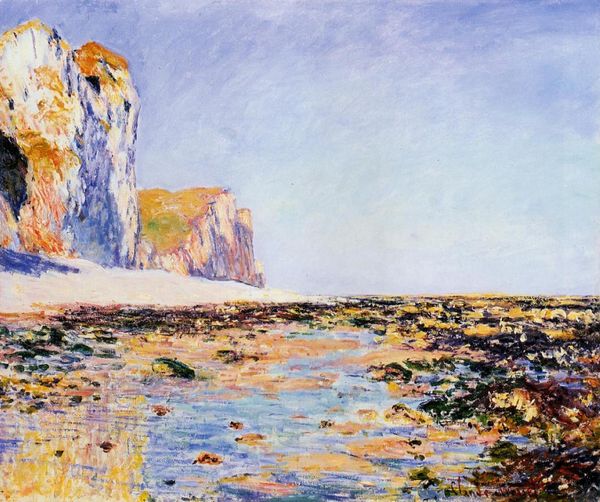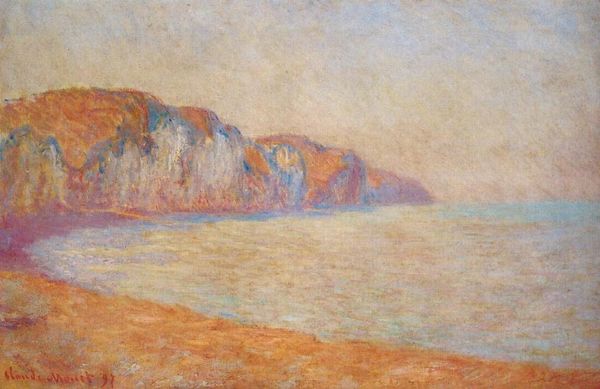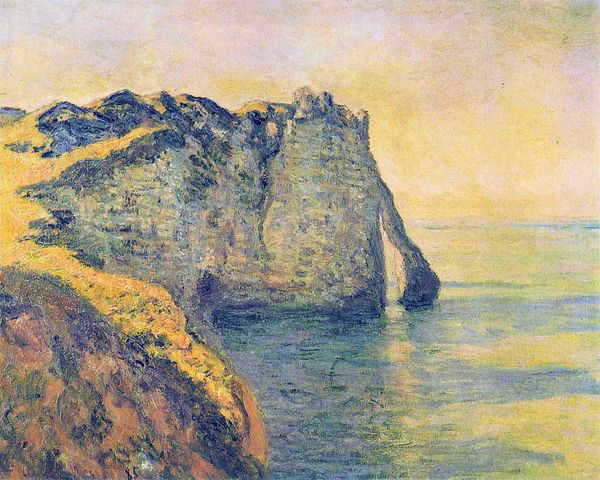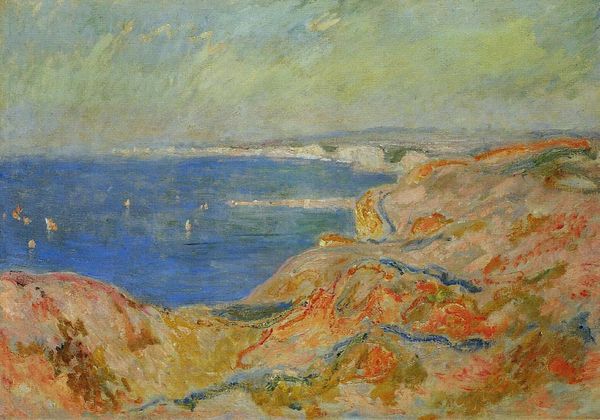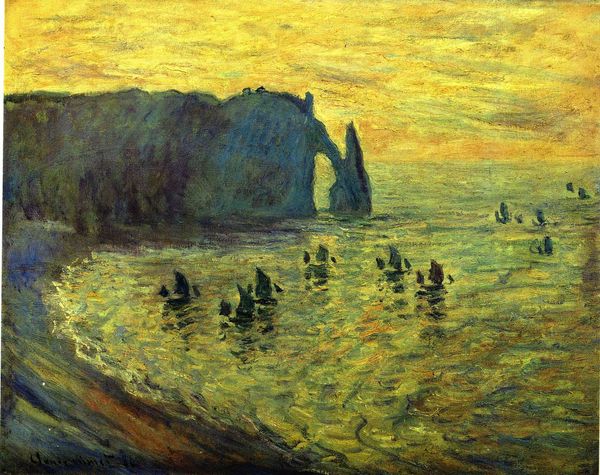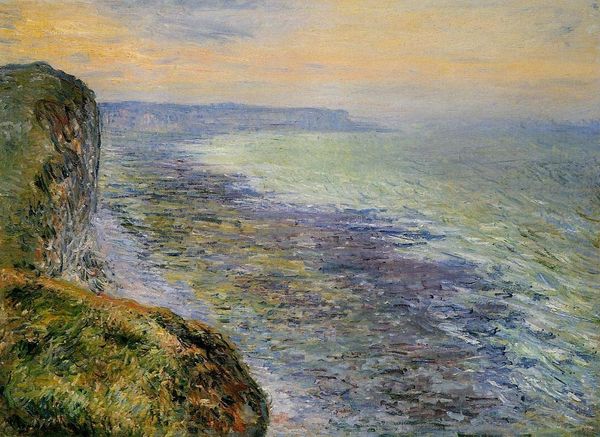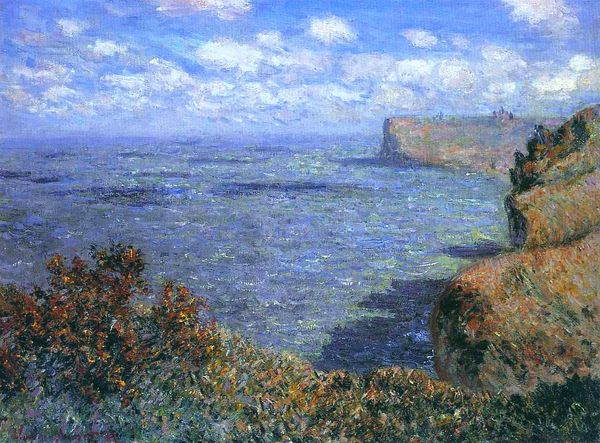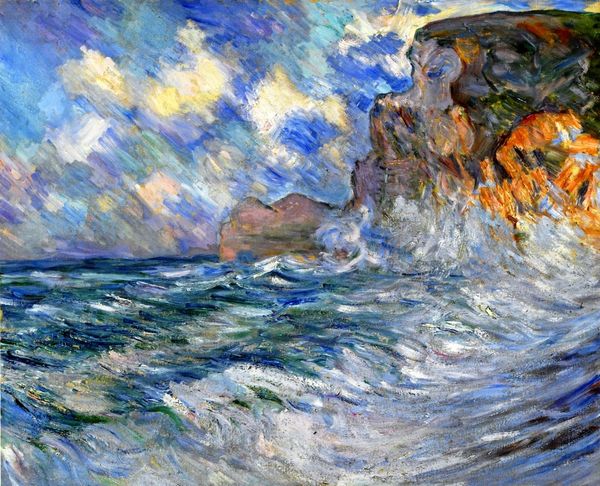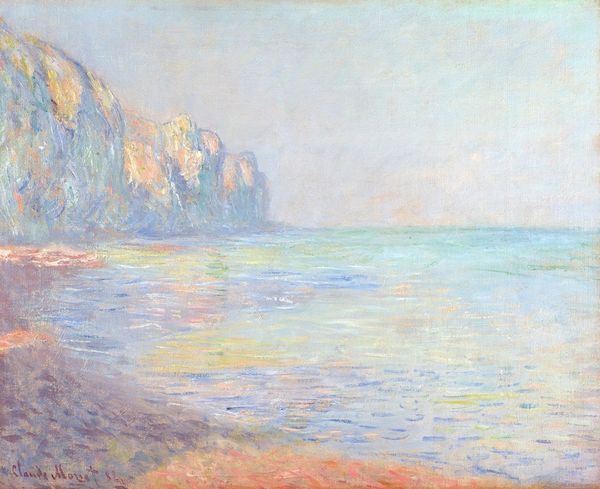
plein-air, oil-paint
#
rough brush stroke
#
impressionism
#
plein-air
#
oil-paint
#
fluid brush stroke
#
landscape
#
impressionist landscape
#
form
#
sea
Copyright: Public domain
Curator: Immediately, I'm struck by how ethereal it feels, almost like a dream. Editor: Indeed. This is Claude Monet's "The Manneport, Reflections of Water," painted in 1885. It depicts the Manneporte, a natural arch in the cliffs of Étretat in Normandy. Curator: The rough brushstrokes capture the fleeting light so well. It embodies plein-air painting. How did this location factor into the cultural or even political scene in France? Editor: Well, beyond being a subject of aesthetic appreciation, Étretat, in this era, began to be a playground for the privileged. Landscape painting was transforming. The democratization of travel via new railways allowed Parisian elites to gaze upon what was until then just for locals. Curator: So there is some commodification, where one gets the sense of an exclusive landscape in flux, made increasingly available to particular socioeconomic demographics and power relations? Editor: Absolutely. Monet captures the landscape. The new railways allowed the bourgeois gaze, which is implicated with an aesthetic ideology and consumerism that continues today. It prompts a dialogue between art history and theory through socioeconomic forces. Curator: Thinking of commodification and the public's changing access reminds me about current efforts for more public and green spaces accessible to marginalized communities. Editor: Yes, these landscapes represent both the beauty and complicated layers of access to them, resonating deeply with the battles being fought in our day. I admire Monet for his technical genius in capturing light. Still, a deeper investigation asks crucial questions on class and environmental implications. Curator: The conversation makes you consider the painting's continued existence, and prompts us to appreciate what beauty still has to tell us. Editor: Agreed. This exercise in both appreciation and historical contextualization challenges our viewpoints and inspires more comprehensive art encounters.
Comments
No comments
Be the first to comment and join the conversation on the ultimate creative platform.
